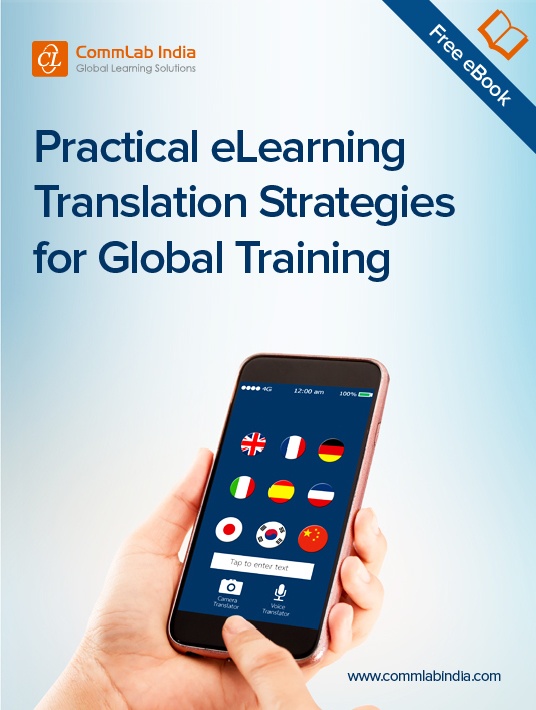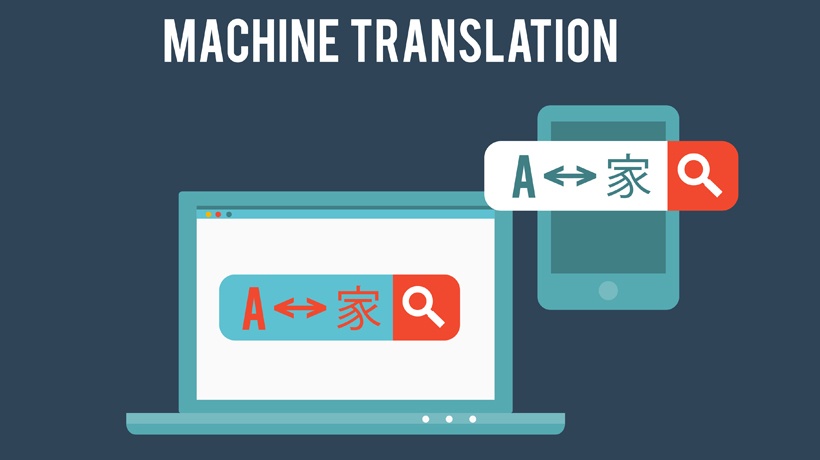The Human Vs. Machine Translations Dilemma
The translation industry was transformed way back in the 1990s with the introduction of machine translations. But, did that make human translators any less important? Did they cease to exist? Not really. Any graphic designer will tell you that 30% of their work spins around modifying another graphic designer’s blunders. It’s a similar plight for human translators; almost a third of their work is amending the errors a machine translation tool makes.

Translation is usually seen as an unnecessary issue that should ideally be resolvable, without incurring any cost or time. Machine translation promises instant, free translation. Consequently, most companies resort to machine translations, owing to their inadequate training budgets. But, does that meet the company’s standards? It doesn’t necessarily mean accurate and consistent translation.
For any company with a global reach, translation is necessary, to deliver training. Therefore, it doesn’t come as a surprise that when offered a free technical solution with the shortest lead time, people usually go in for machine translation, without looking at the outcome.
What Is Machine Translation?
Any translation carried out by a computer is Machine Translation (MT). It is the simplest form of translation, allowing users to choose the base and target languages.
Why Do People Choose Machine Translation?
Speed
Among other things, computers have the advantage over humans when it comes to speed. Most companies resort to machine translation when large amounts of content is to be translated. Machine translation is often a quicker method than working with human translators. However, a major drawback when it comes to machine translation is that, there is a loss of accuracy as a computer is doing the translating and not a native speaker of the target language.
Consistency
At times, machine translation provides a superior quality than human interpretation. This is predominantly because of the consistency in wording and style, which is the place machine translation truly exceeds expectations. But machines fail to score in choosing the right words, based on cultural nuances. They can’t judge the right meaning based on the context – this is where humans score.
More For Less
Machine translation allows for a quick turnaround and customization on projects, which leads to significant savings in translation cost. With machine translation, there is no extra cost for rework, but human translation has thus far been cost-prohibitive.
Why Is Human Translation The Best?
Can you achieve the accuracy and excellence of human translation using a machine? Well, the answer is an unambiguous ‘NO’. Human translation calls for a systematic process and the application of focused expertise of the human translator who is capable of choosing the right alternatives.
Better Quality
How do you distinguish between a good translation and a mediocre one? A good translation sounds natural and fluent. Human translation builds on creating an artistic interpretation of the original content, with words and phrases that are rewritten and re-arranged to appeal and suit the target audience. Most importantly, the essence of the content is retained and this is possible only with a human translator, as they are aware of cultural sensitivities, native vernaculars, tone and idiomatic phrases; this is impossible with a machine.
Language Expertise
When it comes to a native translator, their expertise in both languages, helps them translate the content to suit the needs of the audience. Although machine translation is economical and quicker than human translation, they can’t grasp the connotation of a document.
Cultural Sensitivities
An important aspect to be kept in mind while translating content is the cultural sensitivities that are followed the world over. Each culture has its values woven into the language. Therefore, when translating your professional content from one language to another, it is imperative to be sensitive to these different cultural norms and values. Many translators claim to have knowledge of cultural norms and values, but be sure to choose a professional translation firm. Professional firms are familiar with the know-hows while dealing with culturally sensitive content.
12 Cost-Saving Translation Tips
While it is common knowledge that training budgets are quite slim in many companies, most of them do not allocate a separate budget for translation. Many believe that the translation and localization of courses costs a fortune. Here are a few money-saving tips to help you make the most of your translation and keep your project within your budget:
- Choose a professional translator who has the expertise in handling large translation/localization content and can revert within a short span.
- Globalize units of measurement, time, and currency.
- Use simple content.
- Cut down on the use of audio.
- Use video carefully.
- Refrain from using text on images.
- Use universal visuals.
- Reserve space for text expansions.
- Accurately identify languages and dialects, to avoid redoing.
- Use the right authoring tools and translation memory tools.
- Save original source files for easier and quicker translations into multiple languages.
- Make sure your LMS is compatible with the translated languages.
When you choose professional expertise over machine translation, you will not only get the best quality translation, but also a comprehensive proficiency of both languages, creative language, and content that is culturally sensitive to the norms and values of the people who speak the language. Learn about choosing a single eLearning vendor for all your translation and course development needs and ensuring quality content in this informative free eBook.
Related Articles:
- 6 Translation Strategies You Can’t Afford To Ignore
- Translation And Localization Of Online Courses: Ensuring The Success Of Your Global Training
- 6 Qualities To Look For In eLearning Translation Vendors
- 5 Tools To Make eLearning Translation Easy










